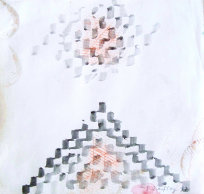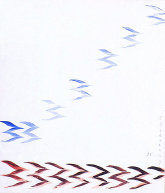
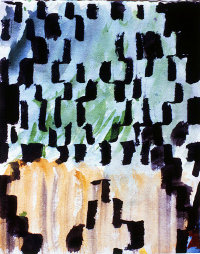
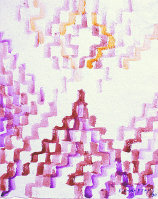
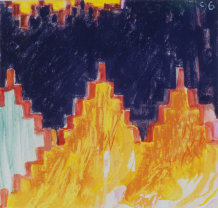
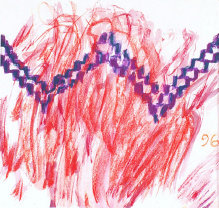
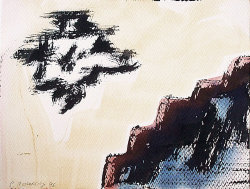
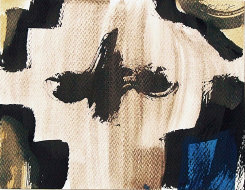
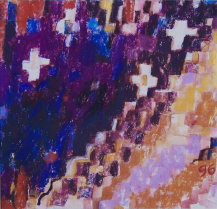
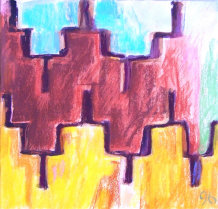
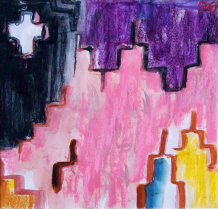
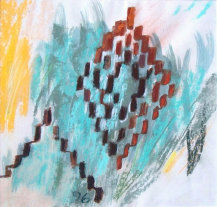
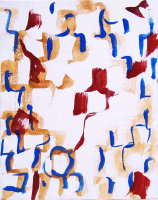
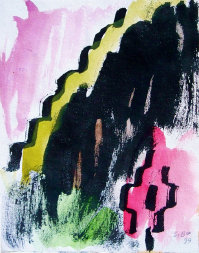
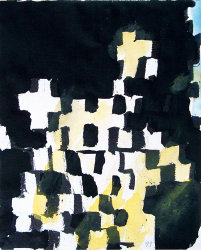
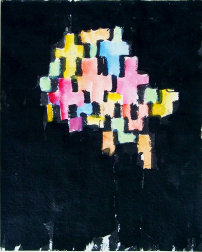
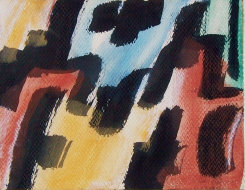
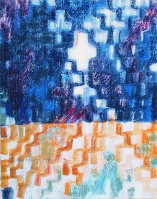
works on paper
IXTEC SERAP
E
M
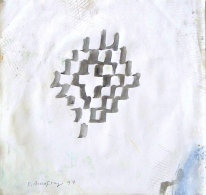
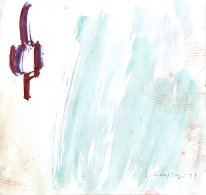
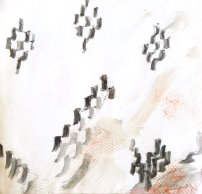
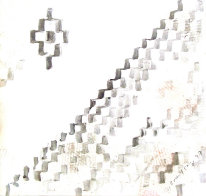
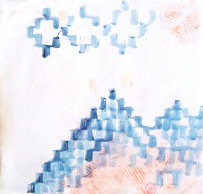
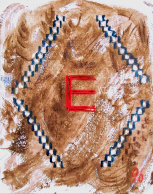
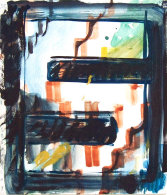
In this group of three drawings I was interested in how the process of weaving creates shapes and designs. The cris-crossing of warp and weave which render all ideas in a checkerboard grid, dictates the nature of the shape, which is usually being explored by the weaver in an attempt to represent an object or idea stemming from an experience in nature. This particular shape, which I think of as symbolizing the "four directions " is what results from the simplest of figurations, a cross, surrounded by the opposite color and then again surrounded in turn by the original color. The difference with the process of painting, is that the brush, which conveys the paint, also conveys expressive feeling by the way it is used.
These four studies allow the ink to allude to the blockiness and graphic contrast, of woven designs made with natural wool colors, like black and white. Pale color livens-up the mood. The third piece, of the four, is more or less a reference to an earlier spray-painting called "First Orb." The fourth piece in this group is a landscape recalling the arroyo where I camped on two occaisions while visiting the Sierra Mixteca, where there are no hotels or boarding houses in any of the villages, as they never have any visitors from outside the area, save local relatives, and occaisional officials, who do not stay over-night.
In this group of pieces, selected out of a filled notebook, I was again exploring that simple "four directions" shape, which also resembles a Christian cross. Seen as a floating entity it appears in combination with elements which suggest mountains, or the earth over which it hovers.
These drawings were abundant in number and "kicking around" the studio for some time, when I noticed that one or two had been stepped on, by the shoe prints left on them. I was amused by the idea that the serapes, which are used first on a man's back, then on a less fortunate relative's back, then on a horses back, under the saddle, are finally used as floor coverings and are also stepped on. That is the end of the journey for such weavings and that is also why it is hard to find older examples of work. They are used until they are gone.
This experience also reminded me of the "dirty" look of some of Basquiat's and Picasso's drawings. One day I found myself stepping on some red Chinese "seal" paint and introducing it as a color into the series with my shoes. Thus the title of th group: "Stepped -On Serape Drawings."
These drawings were abundant in number and "kicking around" the studio for some time, when I noticed that one or two had been stepped on, by the shoe prints left on them. I was amused by the idea that the serapes, which are used first on a man's back, then on a less fortunate relative's back, then on a horses back, under the saddle, are finally used as floor coverings and are also stepped on. That is the end of the journey for such weavings and that is also why it is hard to find older examples of work. They are used until they are gone.
This experience also reminded me of the "dirty" look of some of Basquiat's and Picasso's drawings. One day I found myself stepping on some red Chinese "seal" paint and introducing it as a color into the series with my shoes. Thus the title of th group: "Stepped -On Serape Drawings."
These works on square paper have a freshness which comes from being hit once quickly with water based egg tempera and worked into, just a bit, with pastel. The earthy pastel, which I feel gives the piece a "physical grounding" is used lightly over the still visible transparencies of the water based washes. These are all abstract landscapes, really, created by subverted patterns, with hovering crosses and "gods-eyes."
The three pieces at left are specific elements of design seen over and over in the Mixtec weavings, but I have tried to enliven them. The second, which has a zig-zag sort of design, described to me by some weavers as representing water, and by others as having other meanings, here represents a line of birds rising from a body of water. While most designs have been passed down for as much as a thousand years or more, many of the ancient meanings have been forgotten.
Three other pieces, at right, use elements of Mixtec design and of weaving, in general, abstractly, reinventing meanings in a personal way, illustrating thought representing "place"; imagining fantasy "idea" landscape; and describing a believable feeling of "event" in landscape. All of these modes of thought are available to my mind and all of these things can also be represented using the same means used for a millenium by native Americans, in their age-old vocabulary of visual communication.
works on paper
